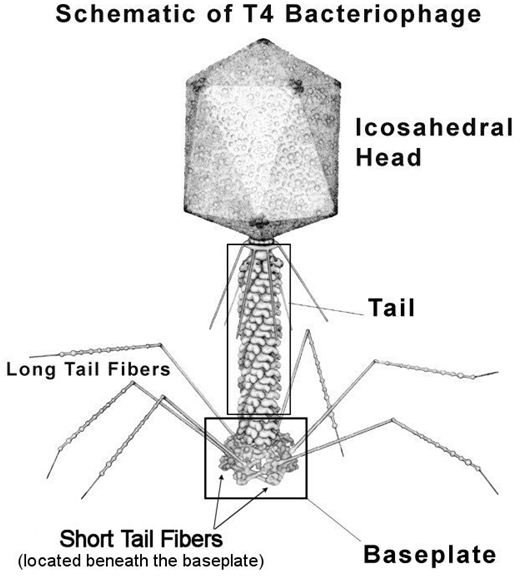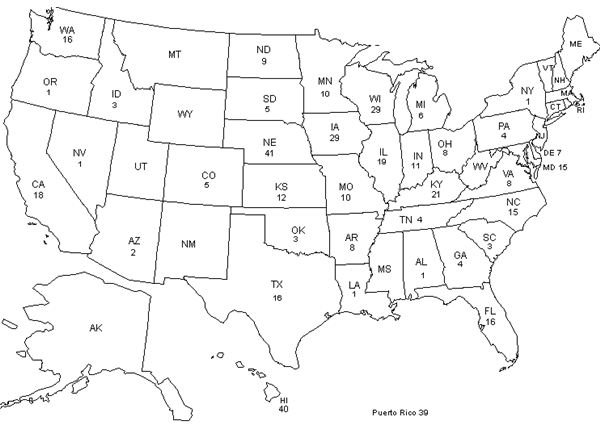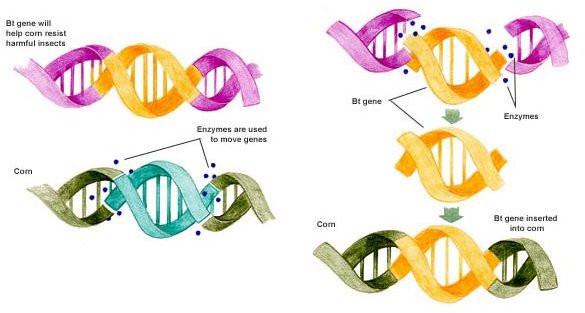5 Genetic Engineering Practices That Could Prove Dangerous
A Brief History of Genetic Engineering
Only in the 20th century did genetic engineering reach a point where it began to present active dangers to humans as the world as a whole. Before this time, humans used natural laws to manipulate genes, a method that began with technically with Mendel’s pea plant experiment in the back-gardens of an abbey but has in fact been a part of human history since we started growing plants for nutrition and raising animals. When we began choosing more tasty, hardier breeds and developing useful, inherited characteristics through careful seeding and breeding we tampered with genetics—albeit a useful and usually harmless tampering.
Then the latter half of the 1900s dawned, and scientists began dabbling in earnest, starting small with viruses and bacteria and finding ways to isolate genes or alter DNA, identifying key enzymes and putting the pieces together to form a picture of how DNA works. The 1970s saw widespread genetic research, while institutes (in America, at least) such as the National Institute of Health began to put restrictions on experimentation until satisfied it could be conducted safely. Unfortunately, the NIH spoke about 30 years too soon.
Our reach exceeds our grasp, they saw, and science proves this best. Up through the 1990s, genetic engineering produced surprising resources, such as the famous genetically engineered insulin and interferon medicine products, vaccines, healthier plants, and bug-resistant vegetables. Not only the NIH but the FDA, the Department of Agriculture, the US Patent and Trade Office, and the National Academy of Sciences got behind altering DNA to advance human medicine and agriculture. Eventually, when slight genetic enhancements in everyday products were becoming fairly common, science caught up with itself and researchers began discovering that even slight genetic manipulation resulted in long-term, irreversible, and possibly dangerous results, not just for biology but for economics and industry, too.
Here are five examples of dangers our just-in-time genetic engineers are beginning to consider:
1. Unintentional Mutations

The reason genetic engineering is being heralded as the source of myriad cures is that scientists are able to remove genes very specifically. Once a gene is known to cause an inherited disease, for example, it is possible that it can be removed from a DNA strand. However, when scientists try their hand at putting new genes into sequences, the procedure becomes much more imprecise—dangerously so. The United States government has allowed genetic engineers to alter various plant products because they are simpler in design than complex animal organisms, and because the changes that have been officially made are very simply, mostly the addition of virus-resistance to crops such as papaya, soybean, and squash. Originally this was looked upon as eco-wise, removing the need for certain pesticides.
The problem is that plants do not always keep precisely to the plan. Original genetic engineering can have unexpected results enough, such as the Bt-corn toxin that proved unhealthy to monarch butterflies, but when plants incorporate the new genes further into their system with subsequent generations, the effects can be even more potent. Both soybean and corn samples have (in the face of controversy) been proved to produce new, unexpected allergens unhealthy for humans allergic to certain particles. The threat of unintended toxins and allergens will increase as more and more crops and animals are genetically altered. Now that the problem has been uncovered, extensive testing is often required to search for such mutations.
2. Ecological Imbalance
Scientists also struggle with real-life genetic applications. The truth is that the world is not divided into sequestered laboratories where effects are neatly, hygienically separated from each other. Everything in an ecological system works together, and when a new organism is introduced—and every genetically engineered plant is a new organism—the system changes from top to bottom. This can lead to some very real consequences, the most obvious of which is the environmental turmoil caused by a stronger species overtaking the natural, indigenous life around it.

When we create stronger, bug-resistant, fast-growing crops that produce seeds more frequently, we are potentially endangering surrounding ecosystems by introducing a competitor they cannot handle. Just like we learned in school, every link of the chain is important: if genetically engineered plants take over an ecosystem with toxins that are poisonous to the bugs that feed on them then those bugs will die out, followed by the organisms that feed on those bugs, and soon the entire food chain will be forced to adapt or die out.
Because of this, scientists and farmers were careful to preserve “traditional” seed supplies, an attempt that has already failed (you can read more about the seed contamination study here). We aren’t sure how, but seed supplies that were supposed to be kept pure have been contaminated, and certain indigenous plants have already been contaminated by simple cross pollination.
3. Hybrid Infections

One key field of genetic engineering is the creation of bacteriophages, or viruses that have been specifically made to kill certain types of bacteria. These bacteriophages have been heralded as more precise, more efficient, and more powerful than yesterday’s chemical antibiotics, but as seen with cross-pollination and mutations, altering genetic structures can have more far-reaching effects than originally thought. With bacteriophages, the particular danger is unexpected gene transmission between different types of bacteria.
One bacteriophage is given to a patient to attack and eliminate a bacteria–well and good. But then perhaps the bacteriophage jumps from one patient to another, or turns on a different, but similar, bacteria in the original patient. The virus has picked up some DNA from the original bacteria it killed, perhaps deactivated genes that did nothing much…until the bacteriophage turns on a different type of bacteria, and passes along some of the genes from previous victims. This can create deadly super-bacteria that have acquired immunities and dangerous abilities from the bacteriophage originally meant to kill them. While our current field of antibiotics is slowly producing dangerous, drug-resistant bacteria, the new generation of trained viruses offers equal or perhaps even greater risks.
4. Unhealthy Economic Influences

As the science of genetics becomes more common, with wider applications in diverse industries, the possibilities for companies to take advantage of the markets grow. Crops that grow faster and more abundantly or animal products that are altered to taste better will sell more easily than other types, thus creating a new realm of advantages. At the moment, the yield from GM crops does not differ enough to make an impact on American markets, but we are learning to make improvements…and America is not the only market in the world.
GM crops and animals that have a minimal impact in the United States or Europe may have a tremendous effect on more undeveloped areas, where genetic modifications have the potential to revolutionize economic systems and topple governments. GM products on the market can lead to even more nasty behavior, including genetic sabotage and genetic monopolies.
5. Personal Genomes Changes and Organ Growing
While gene therapy is—in the wide world of things—a relatively harmless procedure, it will soon be possible to change the human genome itself, to manually guide our own DNA into specific forms. The relationship between DNA and our physical appearance is a proven one. The relationship between DNA and our behavior is a vague and uncertain thing, but still troubling. As manipulation of our own genetic code becomes easier, ethical questions are raised and the shadow of eugenics is thrown again—problems without easy answers, as the many books and stories on the subject have already stated. Healing a child of a genetic disease is one thing. Altering DNA for preference or pleasure will tempt many to devalue human life. Not to mention the clear risk of the introducing mutations into our own genetic structure.
Of course, some solutions are simpler than rewriting parts of our genome. Scientists have already devised the process known as xenotransplantation, or growing human organs in animals that are viable for transplants (as it turns out, you don’t need human clones). While this will open the way to save many lives that would have been lost without organ transplants, it also creates a disturbing possibility for exploiting not only animals but desperate people who may be willing to settle for inferior organs. Organs artificially grown inside animals such as cows or pigs can be susceptible to mutations and weaknesses, making the cure in fact a different type of death sentence without strict medical guidelines.
If you are interested in learning more about GM products, check out The Center for Genetics and Society and The Union of Concerned Scientists for even more information.
Thanks to the NSF, Greenpeace, and NCSU for the excellent pictures.
